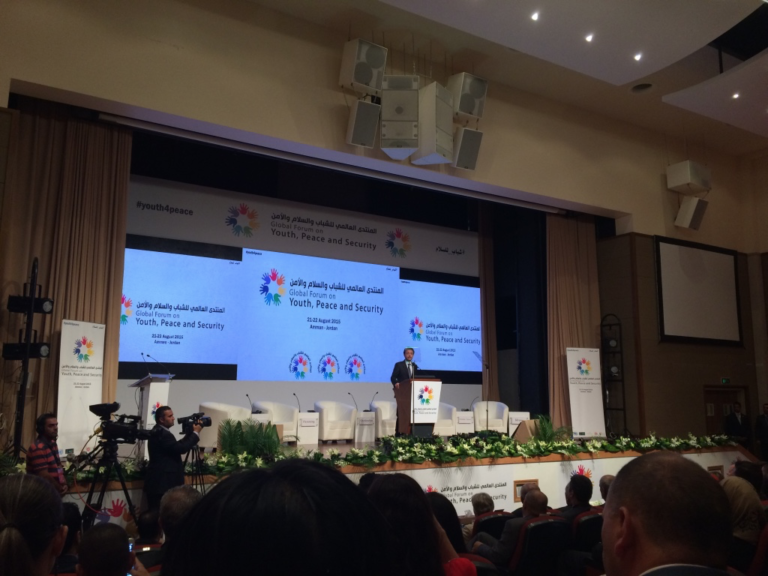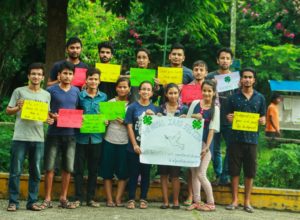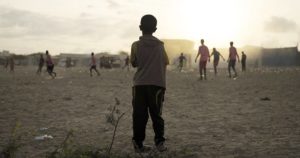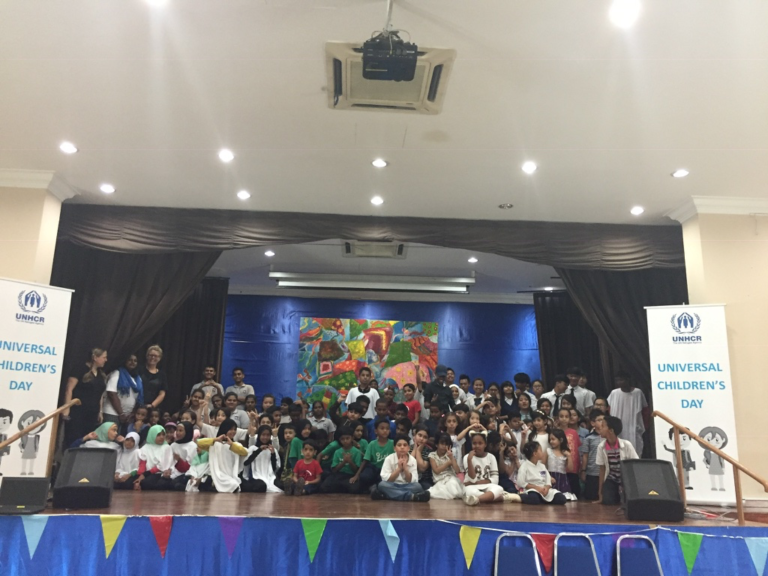This month, Bogotá, Colombia is hosting the Young Peacebuilders’ Forum 2019: Leaving No Youth Behind Through Resolution 2250 and Agenda 2030. The United Network of Young Peacebuilders (UNOY) has brought 60 young peacebuilders together to share their experiences as key stakeholders and important change agents in peace and development. This forum focuses on opening space for meaningful youth participation and growing the network of young peacebuilders globally. Participants discuss bottom-up and up-side-down processes for the 2030 Agenda and the UNSC Resolution 2250. They also outline relevant methods and experience-based lessons for youth inclusion in peacebuilding and how to expand the impact of young peacebuilders globally. Many will wonder about the reasons behind new youth bulge-oriented policies and why focus on the inclusion of young people matters. Yet youth participation is not only relevant, but absolutely necessary for achieving peace and sustainable development.

We are currently witnessing the largest youth population the world has ever known. At approximately 1.8 billion youths, defined as those between the ages of 18 and 29, the global population includes more young people than ever before. These youths face structural challenges such as conflict and violent crises, access to education and employment, health risks, and low public participation. Approximately 408 million juveniles live in fragile situations affected by armed conflictor organized violence. And 225 million of them, 20% of the global youth population, have no education or formal training. While youth represent 25% of the workforce, the global unemployment rate for youth is 13.3%, which is three times that of adults.
Whether youths become perpetrators or peacebuilders might depend on their inclusion as empowered agents for peacebuilding and sustainable positive changemaking.
Youths face specific risks in the context of conflict and warring nations. For example, young people are at higher risk for becoming agents of violence, as seen in Colombia, Liberia, Nigeria, Northern Ireland, and Sierra Leone, to name a few. Young people’s individual participation as combatants, however, is mainly driven by pull factors related to adult-led abduction, indoctrination, or the structural disadvantages resulting from systems created without youth consultation or input. Therefore, youth participation in peacebuilding is a positive catalyst for peace and development, especially given that “the vast majority of young people have no interest in and do not engage in violence, and already are – or should be – engaged as powerful agents of peace.” Whether youths become perpetrators or peacebuilders might depend on their inclusion as empowered agents for peacebuilding and sustainable positive changemaking.
The increasing youth population triggered a paradigm shift in which academics and practitioners began to acknowledge young people as potential positive social agents. In the mid-2000s, international systems and local organizations established an Interagency Working Group on Youth Participation in Peacebuilding. Based at the PBSO (United Nations Peacebuilding Support Office) and co-chaired by Search for Common Ground (SFCG), this working group collaborated to generate norms and international standards around youth programming. Their narrative portrayed youth as peacemakers, with the goal of amplifying youth voices and creating environments for youth contributions. In 2012, the Guiding Principles on Young People’s Participation in Peacebuilding was published after years of consulting with thousands of diverse stakeholders across a variety of platforms.
One year later, 28-year-old Ahmad Alhendawi of Jordan took the position of first Special Envoy on Youth. In 2014, Jordan hosted the Global Forum on Youth, Peace and Securitywhere key stakeholders shared perspectives on youth, peace, and security over several days. This was the first global forum to gather diplomatic delegations, policymakers, youth activists, peacebuilders, NGOs, and academics together with the goal of pushing youth participation in peacebuilding and drafting a declaration for a Security Council resolution on the same subject. At the conclusion of the forum, the leading #youth4peace team (UN, UNOY, SFCG) presented the Amman Youth Declaration to the Jordanian Minister of Foreign Affairs who approved its presentation to the Security Council. On 9 December 2015, the council unanimously passed Resolution 2250 on Youth, Peace and Security.

Simultaneously, the General Assembly resolution that announced the 2030 Agenda of Sustainable Development stressed that “young women and men are critical agents of change and will find in the new Goals a platform to channel their infinite capacities for activism into the creation of a better world.” Another critical outcome of these efforts was the independent report ordered by the UN on youth, peace, and security: The Missing Peace. This progress report was a result of years of consultations internationally and locally on the YPS agenda and youth participation. The findings of this comprehensive report arguably pushed forward the United Nations Security Council Resolution 2419, reiterating youth participation and calling for youth representation in formal decision-making processes, especially for government policies and peace agreements.
The 2018 document from the United Nations, 2030 Youth Strategy, features youth as “right-holders” whose “development and engagement are cross-cutting issues in the 2030 Agenda for Sustainable Development.” These resolutions and documents made way for the first international symposium on Youth Participation in Peace Processes, held in March 2019 in Helsinki, Finland. The symposium created space for youth as valuable peace stakeholders and put youth on the global stage as leaders and important contributors in decision making processes.
Editor’s Picks — Related Articles:

“Empowering Youth through Agro-Entrepreneurship in Nepal”

“International Alert: Building a Transnational Peacebuilding Movement”
Despite the progress in legitimizing youth, we often frame young people as either troublemakers or victims. Especially in analyses of conflict situations, youth can be violent perpetrators or committed peacemakers. That is to say, young people can be agents for peace and positive changemaking, victims of conflict, or potential recruits of violent movements. This complexity resides in their strength and vulnerability as well as in the way systems frame them. From this perspective, consistent youth inclusion is critically important, because their exclusion might become dangerous for them and their communities. To balance these dynamics and create more opportunities for young people to become positive change agents and peacebuilders, we need a more complete understanding of youth and the power of young people.
In the future, we will share examples of youth acting as effective leaders for peace and the relevance of various policy processes related to the #youth4peace agenda. We believe that it is time to shift our perspective from “youth are the future” toward recognizing that youth are the present. We must allow young people to act as important stakeholders during decision-making processes and key actors for peace. Youth participation in political, economic, and social structures is worth investing in for the good of peace and sustainable development worldwide.











